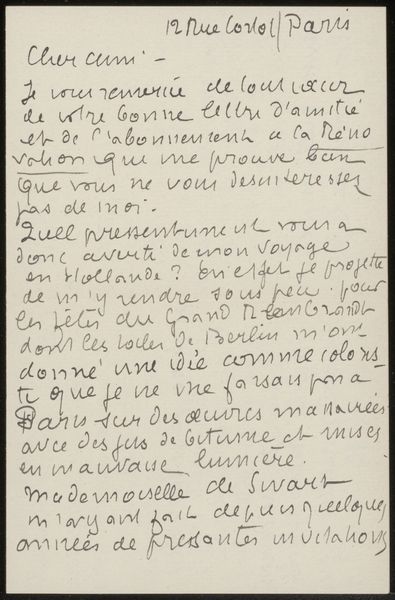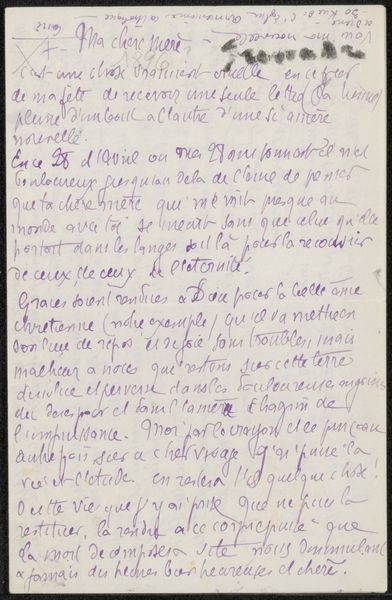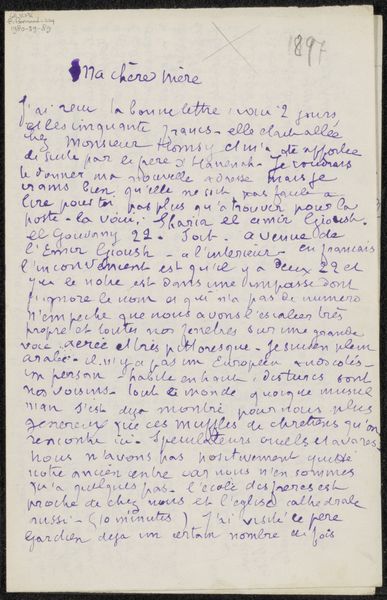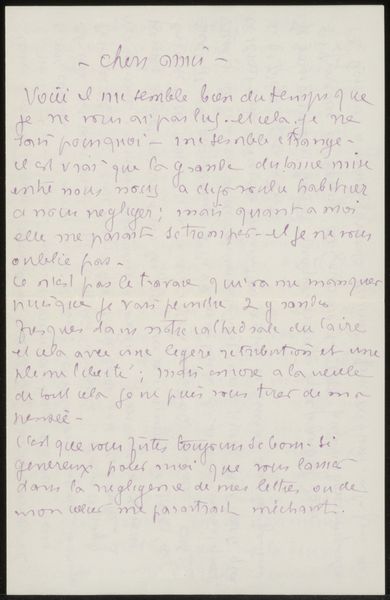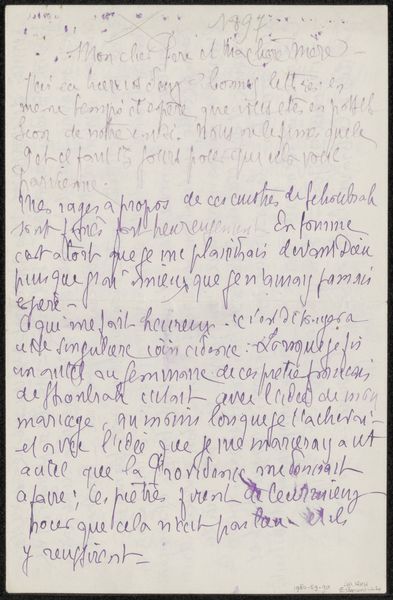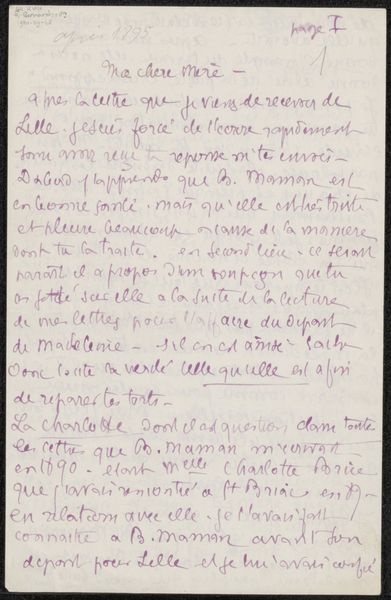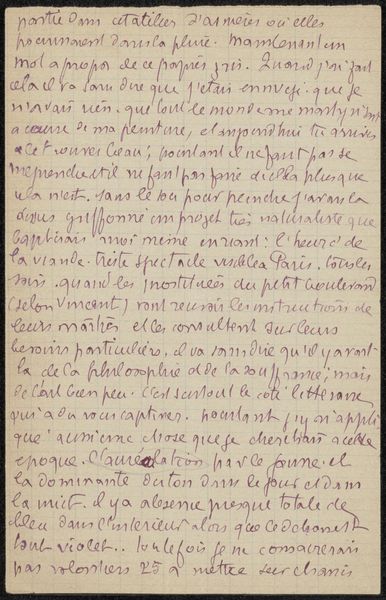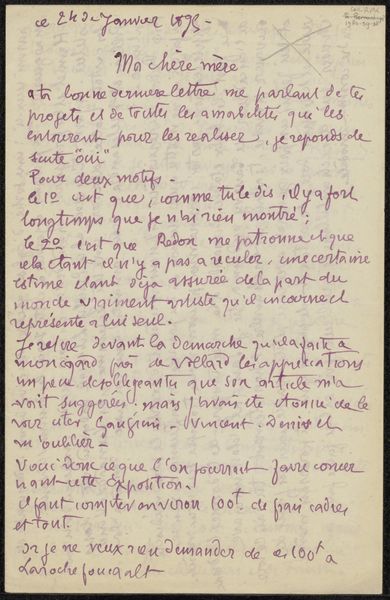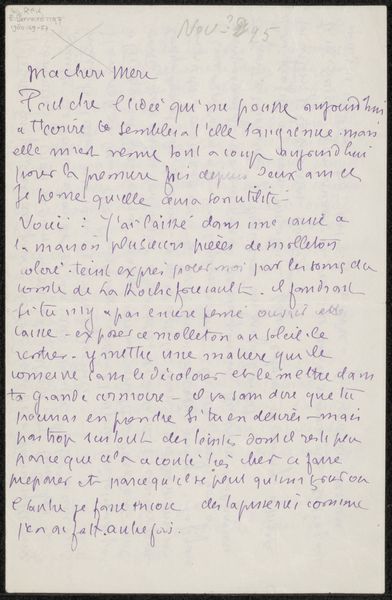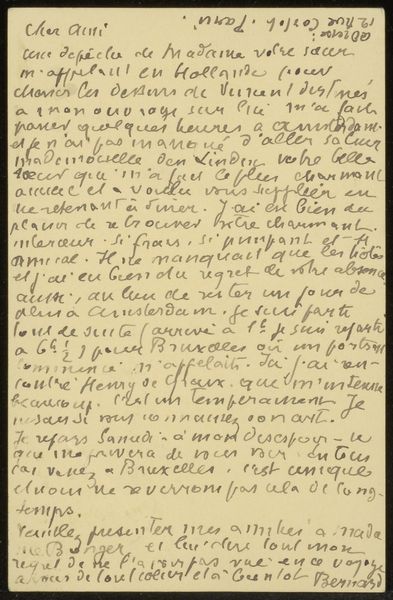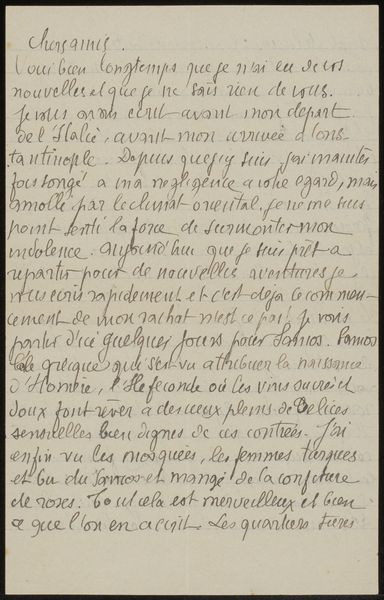
drawing, paper, ink
#
drawing
#
hand written
#
script typography
#
hand-lettering
#
hand drawn type
#
hand lettering
#
paper
#
ink
#
hand-written
#
hand-drawn typeface
#
intimism
#
fading type
#
thick font
#
symbolism
#
handwritten font
Copyright: Rijks Museum: Open Domain
Curator: We’re looking at "Brief aan Héloïse Bernard-Bodin," a drawing in ink on paper by Émile Bernard, dating from around 1895 to 1898. The piece appears to be a handwritten letter. Editor: It feels very intimate, doesn't it? The density of the script and the close cropping lend it a sense of immediacy, as if we're peering over the writer's shoulder. Curator: Exactly. Bernard was deeply engaged in Symbolism at this time, which valued subjectivity and interiority. The choice of handwriting itself becomes significant; it’s not just the content, but the very act of inscription, the labor involved in carefully forming each letter, that conveys meaning. How would access to such correspondence been different in the past from today? Editor: Considering the era, such a personal missive would hold tremendous weight, traveling via post, freighted with anticipation. Now, the ubiquity of digital communication alters the very notion of the handwritten letter; this tangible object speaks to the history of relationships, of distance, and communication norms shaped by material conditions. The content here almost appears like an aside given the density and intimate scale of the piece. I suppose its reception then compared to now might involve considerations around privacy. Curator: Yes, the socio-cultural aspect of correspondence then contrasts sharply with our current digital habits. Bernard wasn’t just creating a message, but performing an act of connection deeply rooted in 19th-century social structures. He uses very economical means in order to render that exchange meaningful—he may have cared less for the traditional medium expectations or even his audience in that regard, and more in the ability to translate intimacy as honestly as possible. Editor: It really forces us to consider the museum as an intermediary in how that intimacy now makes itself legible to our modern viewing sensibilities and consumption. I wonder, how did period museum exhibition choices alter how the average viewer received such gestures of sentiment? Curator: That's an insightful consideration to note that highlights how meaning becomes overlaid. I came to this work examining the raw construction of communication. I leave our conversation seeing something about our relationship to that communication.
Comments
No comments
Be the first to comment and join the conversation on the ultimate creative platform.
